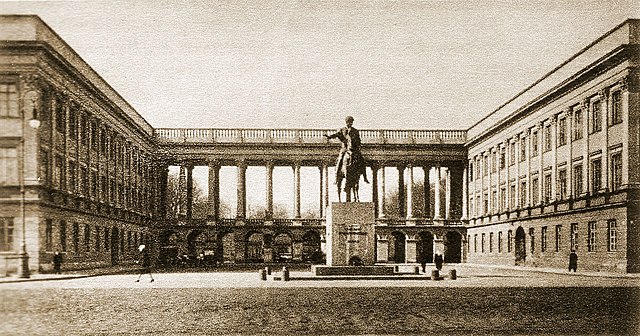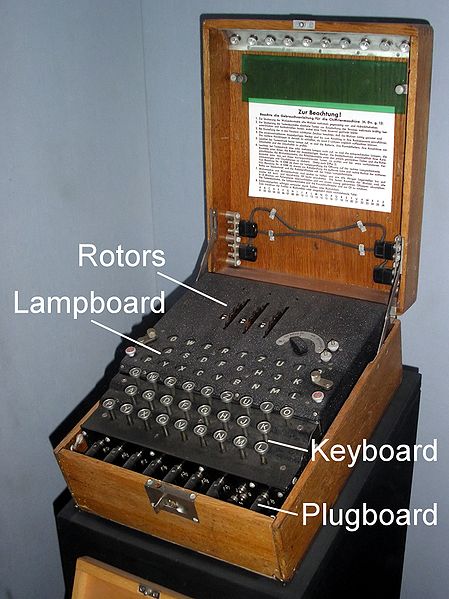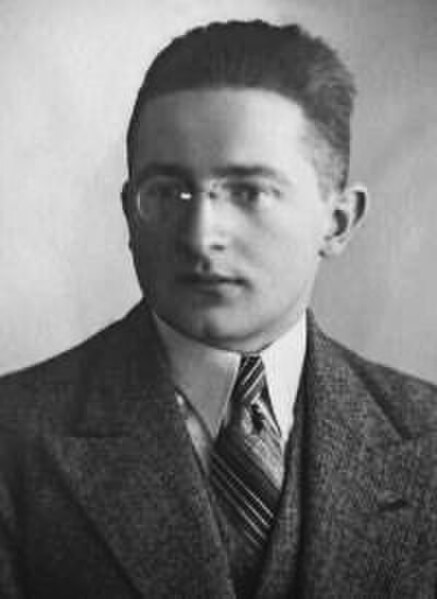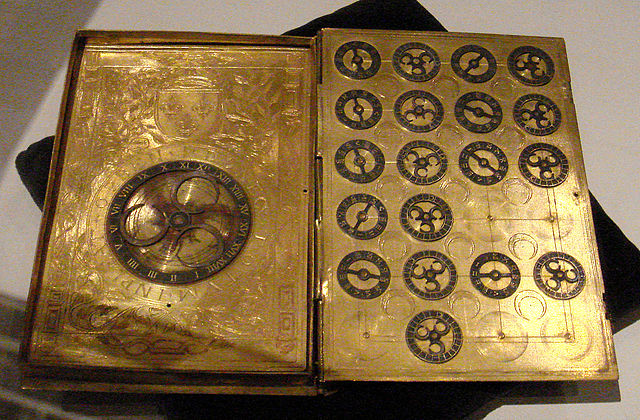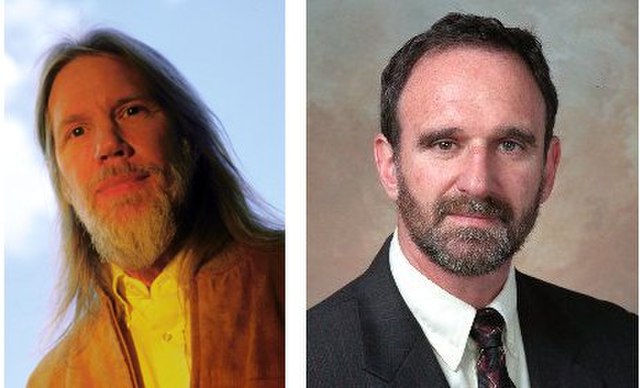The Cipher Bureau was the interwar Polish General Staff's Second Department's unit charged with SIGINT and both cryptography and cryptanalysis.
General Staff building (Saxon Palace), destroyed in World War II. The arcade still shelters Tomb of the Unknown Soldier, before which stood Thorvaldsen's equestrian statue of Prince Józef Poniatowski. In this building, from 1932, the Cipher Bureau broke the German plugboard military Enigma.
Enigma, an electro-mechanical rotor machine with scrambler comprising entry drum, three rotors, and reflector. This military model also has a plugboard.
Marian Rejewski when he first reconstructed Enigma
A Zygalski perforated sheet (1938)
Cryptography, or cryptology, is the practice and study of techniques for secure communication in the presence of adversarial behavior. More generally, cryptography is about constructing and analyzing protocols that prevent third parties or the public from reading private messages. Modern cryptography exists at the intersection of the disciplines of mathematics, computer science, information security, electrical engineering, digital signal processing, physics, and others. Core concepts related to information security are also central to cryptography. Practical applications of cryptography include electronic commerce, chip-based payment cards, digital currencies, computer passwords, and military communications.
Lorenz cipher machine, used in World War II to encrypt communications of the German High Command
16th-century book-shaped French cipher machine, with arms of Henri II of France
Enciphered letter from Gabriel de Luetz d'Aramon, French Ambassador to the Ottoman Empire, after 1546, with partial decipherment
Whitfield Diffie and Martin Hellman, authors of the first published paper on public-key cryptography.

